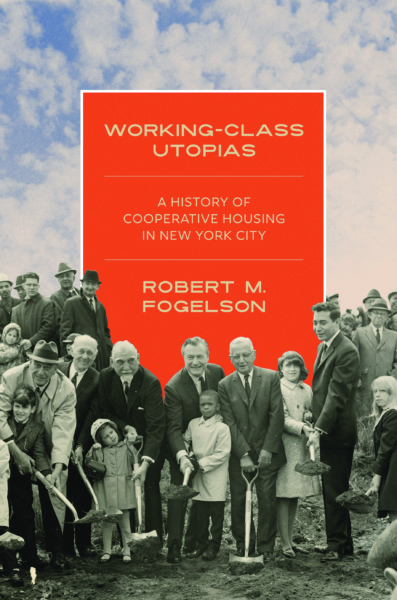A tale of housing co-ops born from poverty and urban squalor brings inspiration – and some sobering lessons in what can go wrong

Working-Class Utopias: A history of cooperative housing in New York City, Robert M. Fogelson, Princeton University Press
Urban historian Robert M. Fogelson looks back here at the story of New York’s co-operative housing, with a focus on key events and driving forces that helped and hindered the movement.
One of those pivotal forces is Abraham E. Kazan, “widely regarded as the father of co-operative housing in the United States”. Kazan developed an interest in co-operatives while working at the International Ladies’ Garment Workers’ Union (ILGWU) before moving to its rival, the Amalgamated Clothing Workers of America. Kazan led the development of a number of key co-operative housing projects, first using Amalgamated as a vehicle and then, in 1951, launching the United Housing Foundation (UHF) to promote co-op housing in New York and elsewhere.

He is presented as a tireless ‘doer’, always looking to press ahead with the next project, “not only to provide quality housing for working class New Yorkers but to set an example for wage earners everywhere”. He believed the spread of housing co-ops would ultimately solve the housing problem that has long plagued the city.
As well as individual actors, Fogelson draws on source material to lay out the legislation, the social, political and economic environments and the ideological debates taking place at city, state and federal levels.
All these shaped the co-op housing movement in New York over the nineteenth century – a period blighted by overcrowding, squalor and a lack of basic amenities. Things would get worse: an acute housing shortage following World War I put pressure on housing regulators to ignore violations. Co-operation was put forward as an alternative to the public vs private binary.
Kazan and his allies argued that the solution “was not tenement-house reform. Nor was it model tenements or public housing. Rather it was co-operative housing. Spacious and sanitary apartments could be built for working-class families, but only by adhering to the principle of self-help that had been adopted first at the Amalgamated Houses and later at Co-op City and the UHF’s other housing projects”.
In 1924 Amalgamated voted to build the Amalgamated Houses, the first of a number of developments led by the union. Other unions and organisations followed suit, and by the 1950s New York stood as the “unrivalled co-op capital” when it came to housing. Amalgamated’s co-ops even managed to weather the Great Depression, though most others did not.
Fogelson, a professor emeritus at MIT, uses personal accounts from residents to bring to life the benefits of co-operative living, such as the garment worker who spoke about living in the Amalgamated Houses: “Where we used to live in New York there was never a blade of grass to be seen and nothing grew but rent … Now the grass is at my doorway, and when I wake up in the morning the birds sing for me.”
But Fogelson also finds testimonies to the less sunny parts of New York’s co-op housing story. Residents of the famous Co-op City development lament the piles of rubble and construction work of the early days of their time there.
The bulk of the book is dedicated to UHF’s Co-op City, the world’s largest co-op housing development. It took its first residents in 1968 but it wasn’t long before trouble brewed. In the 1970s, as inflation spiralled, the co-op hit fiscal troubles following project delays and soaring costs, and residents launched a campaign against management hikes to monthly carry charges. The economic woes of the time – which feel eerily similar to those of 2022 – had time driven the cost of living to “historic heights”, making the increase in charges even less tolerable for residents.
Fogelson offers a detailed run through of the legal battle and rent strike carried out by residents of Co-op City. This points to a key issue regarding the governance of Co-op City in its early stages, with the UHF’s leaders described by City News as acting like “benevolent despots”.

Co-op City was UHF’s last development. Fogelson quotes Peter Eisenstadt who wrote that they were “profoundly hurt by the fallout from the Co-op City rent strike” and became “cautious and gun-shy”.
Despite the challenges it faced, Co-op City survived and remains the world’s largest co-op housing development, though it ultimately failed to spur the hoped-for co-operative housing revolution.
Fogelson quotes Governor Rockefeller describing Co-op City as the “crowning achievement” of the co-op housing movement, leaving the reader wondering if its story is one of hope and inspiration, or a cautionary tale. Perhaps it can be both.
With thanks to Alice Toomer.MsAlpine, thenews.coop
